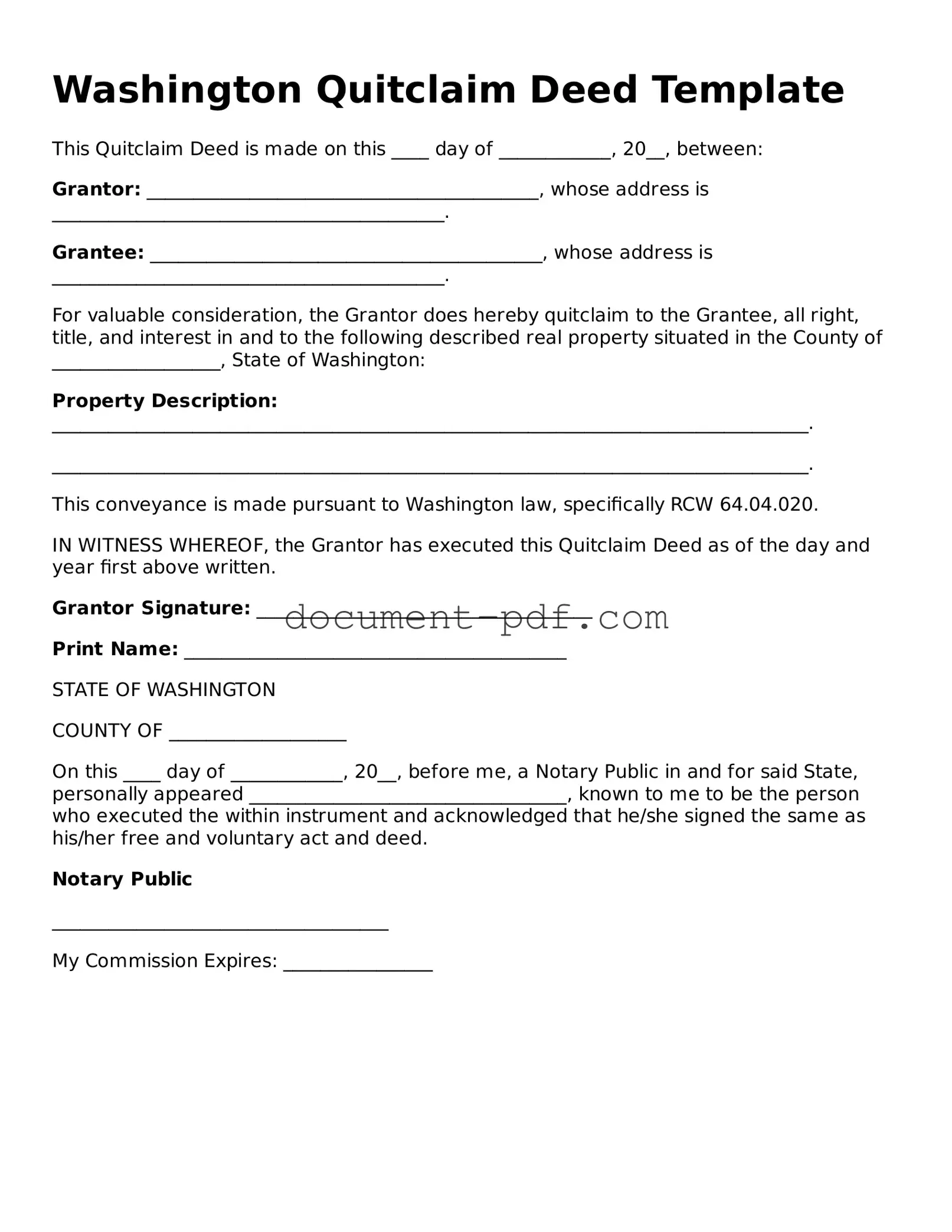Washington Quitclaim Deed Template
This Quitclaim Deed is made on this ____ day of ____________, 20__, between:
Grantor: __________________________________________, whose address is __________________________________________.
Grantee: __________________________________________, whose address is __________________________________________.
For valuable consideration, the Grantor does hereby quitclaim to the Grantee, all right, title, and interest in and to the following described real property situated in the County of __________________, State of Washington:
Property Description: _________________________________________________________________________________.
_________________________________________________________________________________.
This conveyance is made pursuant to Washington law, specifically RCW 64.04.020.
IN WITNESS WHEREOF, the Grantor has executed this Quitclaim Deed as of the day and year first above written.
Grantor Signature: ____________________________________
Print Name: _________________________________________
STATE OF WASHINGTON
COUNTY OF ___________________
On this ____ day of ____________, 20__, before me, a Notary Public in and for said State, personally appeared __________________________________, known to me to be the person who executed the within instrument and acknowledged that he/she signed the same as his/her free and voluntary act and deed.
Notary Public
____________________________________
My Commission Expires: ________________
